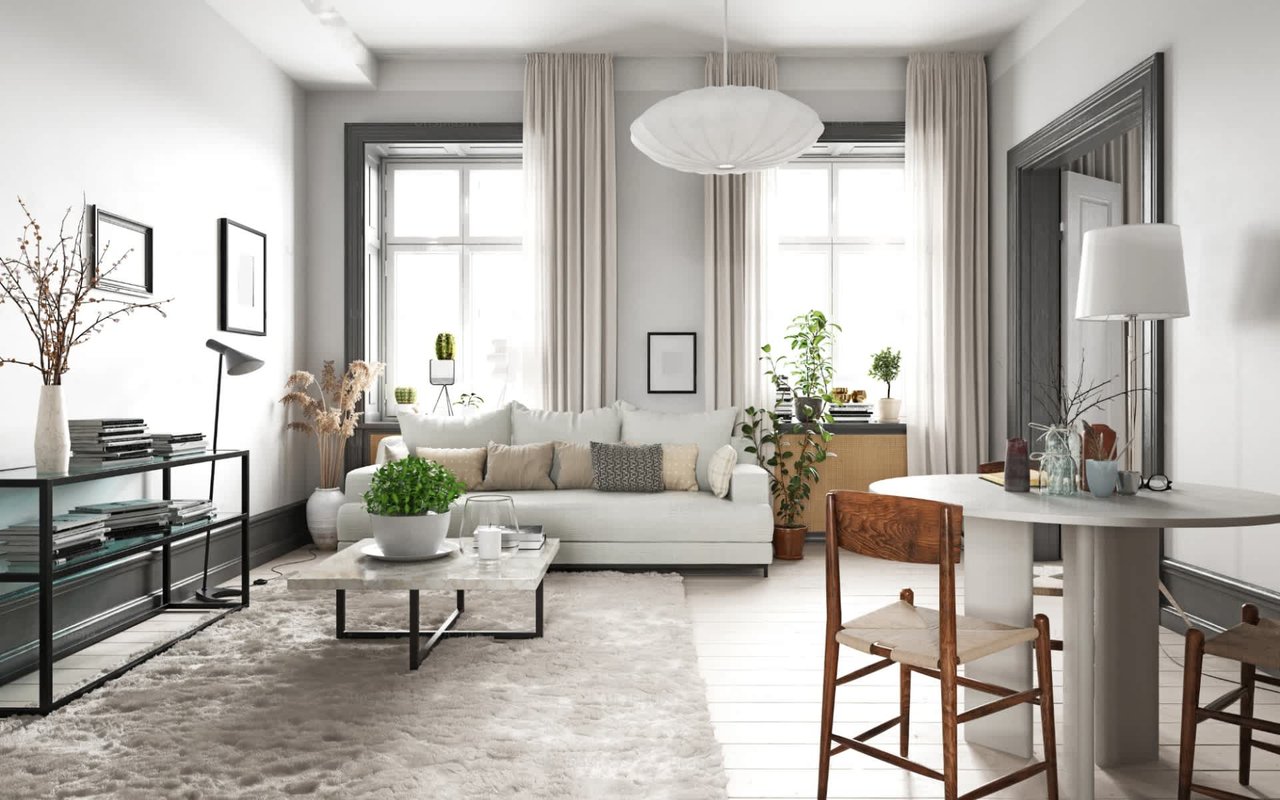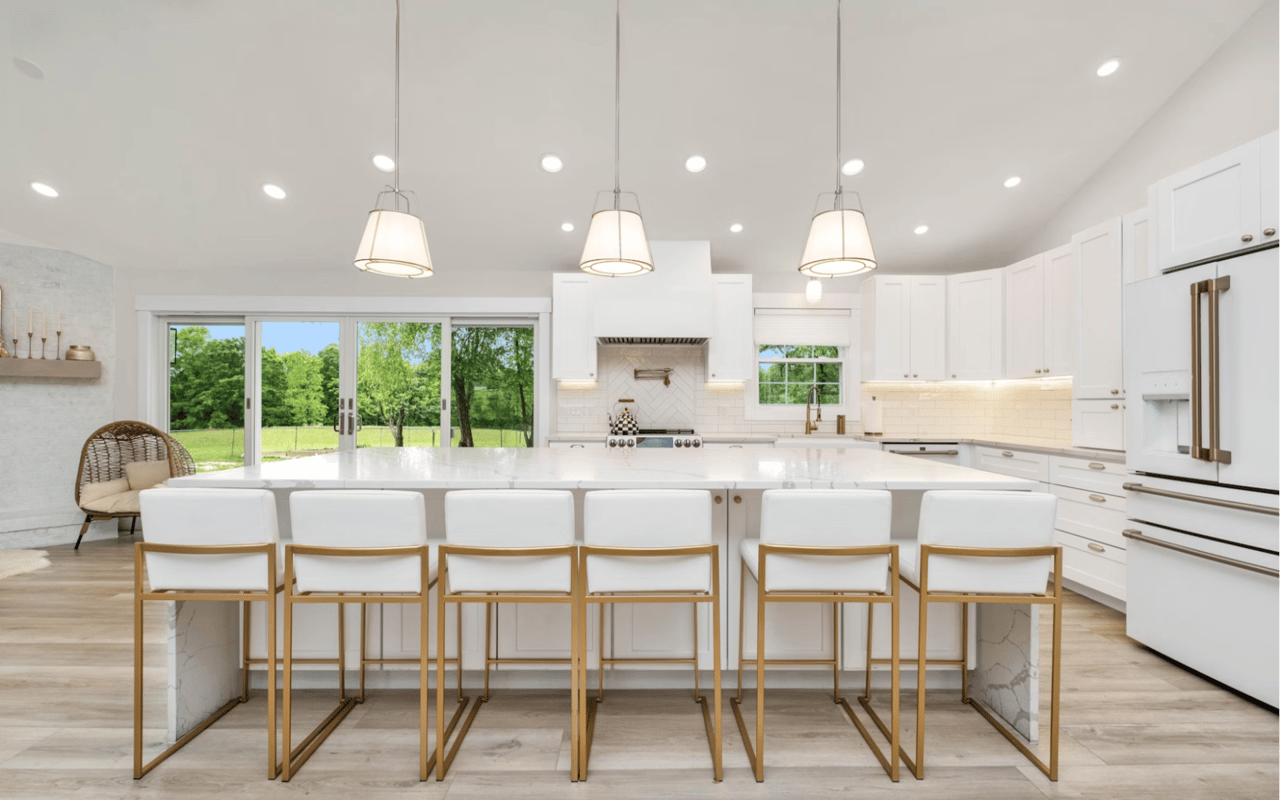When searching for a new home, the term "move-in ready" often pops up in listings and conversations with real estate agents. But what does "move-in ready" really mean? And more importantly, is it the right choice for you? While the idea of moving into a home that requires no immediate renovations or repairs is appealing, there are several factors to consider before deciding if a move-in ready home fits your needs and lifestyle.
What "Move-In Ready" Really Means
- Functional Systems: The plumbing, electrical, and HVAC systems are all in working order and up to code. There should be no need for major repairs or replacements.
- No Immediate Renovations Needed: Major elements like the roof, windows, and foundation are in good condition, and the home doesn't require any immediate structural improvements.
- Appliances and Fixtures Included: In most cases, move-in ready homes come with functioning kitchen appliances, bathroom fixtures, and essential lighting. Some homes may also include modern conveniences like a washer, dryer, or smart home systems.
- Cosmetically Updated: A home marketed as move-in ready will usually have neutral, freshly painted walls, updated flooring, and clean, well-maintained interiors. This doesn't mean the home is necessarily new or ultra-modern, but it should be clean and presentable.
Advantages of Buying a Move-In Ready Home
- Time-Saving: One of the most significant advantages is that you can move in without delay. There’s no need to schedule contractors, wait for permits, or live through the dust and noise of renovations. This is especially beneficial if you're relocating for work, have a tight timeline, or want to avoid the disruption that comes with home improvement projects.
- Predictable Costs: With a move-in ready home, there are fewer unknown expenses. Since the home doesn't require major repairs or renovations upfront, you're less likely to encounter unexpected costs. This can be a relief for buyers who have a fixed budget and want to avoid the financial risks associated with remodeling.
- Modern Features and Updates: Many move-in ready homes come with desirable updates, such as energy-efficient appliances, smart home technology, or contemporary design features. These modern amenities add value and convenience, allowing you to enjoy the latest trends in home living without additional investment.
- Peace of Mind: Move-in ready homes are often subject to fewer inspection surprises, as most of the systems and structures have been updated or well-maintained. You can move in with confidence, knowing that you're less likely to face immediate repair headaches.
Considerations and Potential Downsides
- Higher Purchase Price: Move-in ready homes are often priced at a premium compared to homes that need renovations. Sellers understand that buyers are paying for the convenience of not having to do any work, so they often reflect this in the asking price. If you're looking for a deal or are willing to invest time in improving a property, a move-in ready home may limit your potential for sweat equity.
- Limited Customization: One of the trade-offs of buying a move-in ready home is that you might not get to personalize it exactly the way you'd like. The finishes, design choices, and layouts are already in place, which means you may have to compromise on certain preferences unless you’re willing to make changes later. For buyers with specific tastes or those who dream of a highly customized home, a move-in ready option might feel less personal.
- Less Opportunity for Value Growth: Homes that require renovations often come with the potential for value growth as you improve the property over time. Move-in ready homes, on the other hand, tend to have less opportunity for immediate value appreciation, as they’re already priced at or near market value based on their condition. This could limit your ability to build equity quickly, especially if you plan to sell in the near future.
Is a Move-In Ready Home Right for You?
Your Timeline
Your Budget
Your Lifestyle and Preferences
Your Long-Term Plans
A move-in ready home offers many advantages, particularly for buyers seeking convenience, predictability, and modern comforts. However, it’s important to weigh these benefits against the potential downsides, including higher upfront costs and less room for customization. By considering your personal timeline, budget, and long-term goals, you can make an informed decision about whether a move-in ready home is the right choice for you. Whether you opt for a turnkey property or decide to take on a fixer-upper, the goal is to find a home that suits your needs and provides the lifestyle you desire.
FAQ
What Are Some Additional Factors That Can Increase Homeowner Costs Before Moving In?
Before you even cross the threshold of your new home, unexpected expenses can sneak up on you. Here are some factors you might need to consider when budgeting:
-
Neglected Pool Maintenance: If your new property comes with a pool that hasn't been regularly maintained, prepare for some hefty bills. Addressing chemical imbalances or mechanical issues can quickly add up.
-
Damaged Driveway: A cracked or crumbling driveway not only detracts from curb appeal but may require immediate resurfacing or a complete overhaul.
-
Worn-Out Deck: Is the deck looking distressed? Refinishing or replacing it could be necessary to ensure safety and enhance your outdoor living space.
-
Aging Kitchen Appliances: Older appliances might struggle to keep up with modern efficiency standards and could need replacing for both functionality and energy savings.
-
Unreliable HVAC System: A heating and cooling system that misbehaves can make comfort elusive and lead to soaring utility bills if it requires repair or replacement.
-
Deteriorating Roof: A roof that's past its prime can invite leaks and water damage, necessitating repairs or a full replacement to safeguard your home.
What Potential Issue Should Buyers Consider if a Basement is Unfinished?
When exploring a home with an unfinished basement, it's critical for buyers to delve into why the space hasn't been completed. While some homeowners may have left it untouched simply for use as storage or laundry, there could be more concerning reasons.
One significant red flag is the possibility of water damage. Basements prone to flooding during heavy rainstorms often resist being finished because of recurring water intrusion. Look for indicators such as stains or bubbling paint on walls and ceilings, which can reveal a history of water issues. It's essential for sellers to disclose any known water problems, but buyers should also ensure these concerns are addressed during a professional inspection.
Proactively investigating these potential issues can save buyers from unexpected repairs and expenses after purchasing a home.
Why Might Area Rugs Be Used in a "Move-In Ready" Home, and What Should Buyers Be Aware Of?
The Dual Purpose of Area Rugs
Area rugs can serve as both decorative elements and strategic tools in "move-in ready" homes. They instantly enhance the aesthetic appeal, making spaces feel more inviting and cozy. However, they might also be used to obscure underlying issues with the flooring, such as scratches or damage.
What Buyers Should Consider
-
Inspect Beneath the Rug: Always take a moment to look underneath the rug during a viewing. This can reveal any imperfections that might require costly repairs.
-
Cost Implications: If the flooring is damaged, be prepared for potentially expensive fixes like refinishing hardwood or even replacing sections. Such projects often demand vacating the area, disrupting your moving process.
-
Negotiation Point: A flawed floor hidden by an area rug can be a bargaining tool. Use the condition of the floor as leverage to negotiate a better price or request repairs as part of the deal.
About Jill Armstrong
Contact Jill today to achieve your Iowa City real estate goals.





